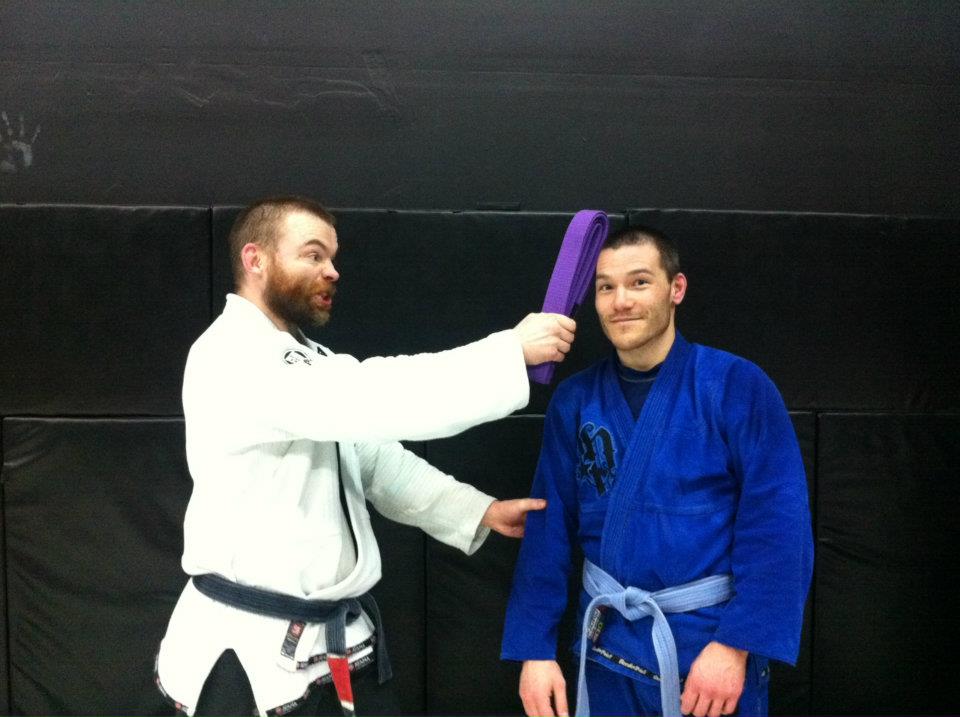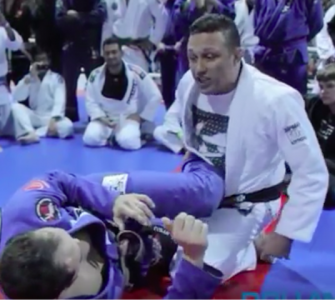Brazilian Jiu-Jitsu (BJJ) is a martial art that has been gaining popularity around the world. It is a grappling-based martial art that focuses on ground fighting techniques. BJJ practitioners wear essential gear like a Gi or rash guards and grappling shorts for NoGi, and use a variety of techniques such as chokes, joint locks, and sweeps to subdue their opponents. In BJJ, the belt system is used to indicate a practitioner’s level of skill and experience. One of the most significant milestones in a BJJ practitioner’s journey is reaching the purple belt. This article will discuss what a BJJ purple belt means, how to reach it, the advantages of being a purple belt, and purple belt goals.
What is a BJJ Purple Belt?
A BJJ purple belt is an intermediate rank that signifies that the practitioner has a solid understanding of the fundamental techniques and is competent in applying them in live training sessions. A purple belt is considered to be the first advanced belt in BJJ and is a significant accomplishment for any practitioner. Reaching this rank requires consistent training, dedication, and hard work. It usually takes several years of training to achieve a BJJ purple belt.
How to Reach Purple Belt
To reach the BJJ purple belt, a practitioner must first earn a white belt and then progress to blue belt. The blue belt is a significant milestone in the BJJ journey as it indicates that the practitioner has a good foundation in the fundamental techniques of BJJ. After earning the blue belt, the practitioner must continue training, refining their techniques and developing their own unique style.
To reach the purple belt, a practitioner must have several years of consistent training, attend classes regularly, and participate in live training sessions. It is essential to have a good instructor who can provide guidance and feedback. Consistent and focused training is the key to progress in BJJ. Practitioners must also develop their own unique style and game, which involves finding techniques that work best for them and honing them.
Advantages of Being a Purple Belt
Being a purple belt in BJJ comes with many advantages. One of the most significant advantages is that it signifies that the practitioner has a solid understanding of the fundamental techniques and can apply them effectively in live training sessions. This gives the practitioner a significant advantage over lower-ranking practitioners.
Another advantage of being a purple belt is that it opens up opportunities to compete in tournaments. Purple belt tournaments are more competitive than lower-ranking tournaments, and the level of competition is higher. Competing in tournaments can be a great way to test your skills, gain experience, and measure your progress.
Being a purple belt also means that the practitioner has developed their own unique style and game. This involves finding techniques that work best for them and honing them to perfection. This gives the practitioner an advantage in live training sessions as they can use techniques that are tailored to their strengths and weaknesses.
Purple Belt Goals
Reaching the purple belt in BJJ is a significant accomplishment, but it is not the end of the journey. There are still many goals that a purple belt can strive towards. One of the most common goals for a purple belt is to earn their brown belt. Earning a brown belt is a significant milestone in the BJJ journey and signifies that the practitioner has reached an advanced level of skill and experience.
Another common goal for a purple belt is to become a better instructor. As a purple belt, the practitioner has developed a solid understanding of the fundamental techniques and has developed their own unique style and game. This puts them in a position to teach and pass on their knowledge to others.
A third goal for a purple belt is to compete in higher-level tournaments. Purple belt tournaments are more competitive than lower-ranking tournaments, but there are still higher-level tournaments that a purple belt can compete in. For example, there are open tournaments that are open to all belt levels, and there are also invitation-only tournaments that are reserved for advanced practitioners.
Finally, another goal for a purple belt is to continue to refine and improve their techniques. This involves studying the techniques of other practitioners, experimenting with new techniques, and refining their own unique style and game. There is always room for improvement in BJJ, and the journey is never-ending.
BJJ Gear for Purple Belts
As a purple belt, you are expected to have a good understanding of the fundamentals of BJJ and should have developed your own unique style and game. This means that you should have a good understanding of the gear that you need for training and competition.
One of the most important pieces of gear for a purple belt is the gi. You should have at least one high-quality gi that fits well and is comfortable to wear. It is also a good idea to have a spare gi in case your primary gi gets damaged or needs to be washed.
In addition to a gi, you should also have a good pair of grappling shorts and BJJ rash guards. Grappling shorts are designed to be comfortable and flexible, allowing you to move freely during training and competition. BJJ Rash guards are designed to protect your skin from mat burns and other skin irritations.
You may also want to invest in some other gear, such as knee pads or finger tape, to protect your joints during training and competition. A pair of BJJ spats are also worth having to avoid mat burn and skin to skin contact.
Conclusion
Reaching the BJJ purple belt is a significant accomplishment and signifies that the practitioner has a solid understanding of the fundamental techniques and can apply them effectively in live training sessions. It is important to continue training, refining your techniques, and developing your own unique style and game. Being a purple belt comes with many advantages, including the ability to compete in higher-level tournaments and the opportunity to teach and pass on your knowledge to others. By setting goals and continuing to refine your skills, you can continue to progress in your BJJ journey and achieve even greater accomplishments.

















